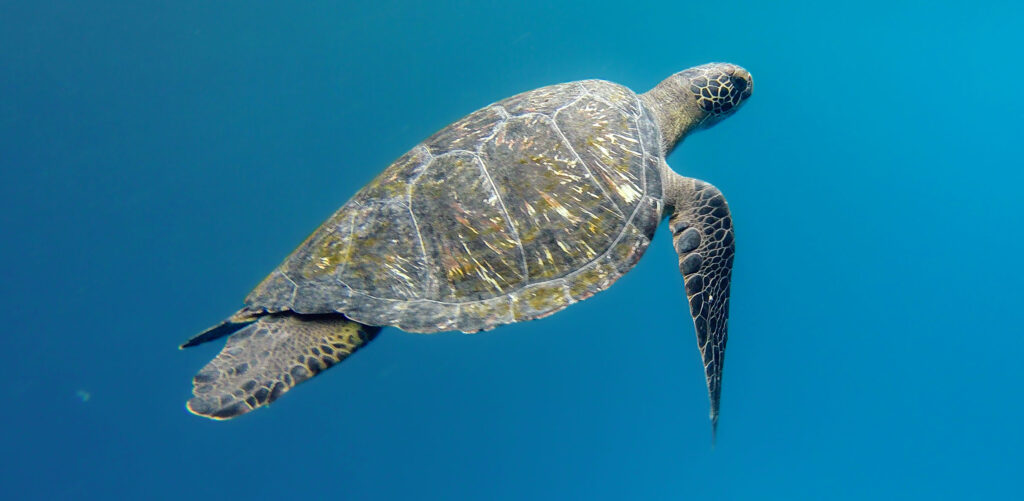The Ultimate Galapagos Travel Guide (2025)
The Ultimate Galapagos Travel Guide (2025)
The Galápagos Islands, a UNESCO World Heritage Site, are a unique archipelago located
about 1,000 km / 621 miles off the coast of Ecuador. Known for their extraordinary
biodiversity and as the inspiration for Charles Darwin’s theory of evolution, the islands offer
an unforgettable experience for nature lovers and adventure seekers alike.
When to Visit:
The Galápagos can be visited year-round, but the best time depends on your interests.
From December to May, the islands experience warmer temperatures and calmer seas,
ideal for snorkeling and swimming. June to November is cooler, with nutrient-rich waters
that attract abundant marine life, perfect for wildlife enthusiasts. These months see more
overcast skies but offer excellent opportunities for diving.
For more information about the weather and best time to visit, please check our Blog :
“Best time to visit the Galapagos Islands”
With its unparalleled wildlife and stunning landscapes, the Galápagos Islands offer a one-
of-a-kind adventure.
Traveling to the Galapagos
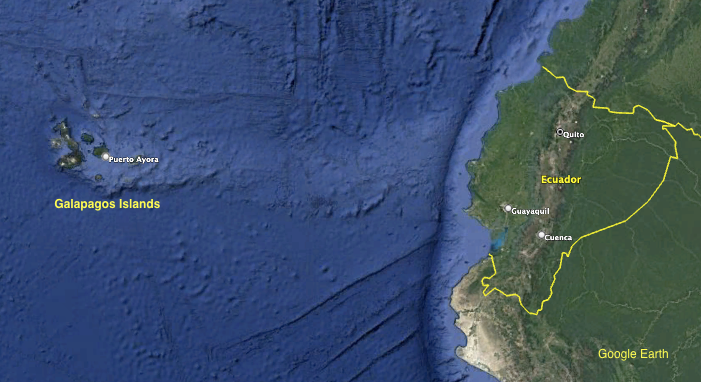
Where it’s located and a short history
The Galápagos Islands west of the Ecuadorian mainland in the Pacific Ocean were
discovered by Fray Tomás de Berlanga on March 10, 1535, after strong currents
accidentally carried his ship to the islands. He deemed them uninhabitable and struggled to
return to the mainland. Known as the “enchanted islands,” they seemed to appear and
disappear due to navigational errors, strong currents, and fog, making it difficult for 16th-
century privateers and whalers to locate these “phantom islands.”
The Galapagos archipelago belongs to Ecuador and was recognized by UNESCO as a
World Heritage Site and biosphere reserve in 1978. In 1998, the waters around the islands
were declared a marine reserve. The southern part of Isabela is designated as a wetland of
international importance (Ramsar Convention).
The archipelago consists of 18 main islands, 3 smaller islands and around 107 rocks and
islets. Each island has its own individual characteristics and its own flora and fauna. The
islands are inhabited by about 28,000 people, mostly Ecuadorians, and almost all of them
live on the islands of San Cristóbal – the capital – and Santa Cruz, but there are also
settlements on Isabela and Floreana islands.
How to get there
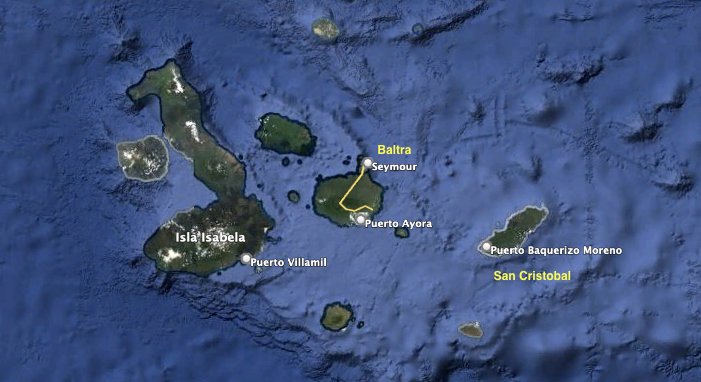
To reach the Galápagos Islands, you will first need to fly to mainland Ecuador, either to the
capital Quito in the Andes or Guayaquil, Ecuador’s largest city at sea level.
From there, daily flights are available to the Galápagos islands with different air companies.
When booking your own flights from mainland Ecuador to the Galápagos Islands, keep in
mind that there are two airports in the archipelago. San Cristóbal Airport is located on San
Cristóbal Island, while Seymour Airport, is on Baltra Island, just across a narrow channel
from Santa Cruz Island. Make sure your flights align with the island where you’ll be staying
or where your boat departs and returns.
Once you arrive, you can explore the islands by booking cruises or staying in hotels on one
of the inhabited islands, where day trips to various visitor sites are offered.
There are two ways to move between the inhabited islands: the public speedboats and a
flight connection by small plane.
Park fees and biosecurity
The following are mandatory requirements for traveling to the Galápagos Islands.
– Round Trip flight ticket from / to Quito or Guayaquil : you must have proof of thedate when you’re leaving the Galapagos Islands again. – Travel Insurance: A travel insurance that covers emergency evacuation and medical expenses.
– Luggage Check: When leaving Ecuador’s main land, your luggage will be
checked for restricted items by the Tourist Control and Certification (TCC) to ensure
the preservation of the islands’ unique environment and wildlife. It is forbidden to
bring fresh products such as meat, fruit, vegetables and plants onto the islands.
– INGALA / TCT – Transit Control Card: All national and international visitors require a
TCT (Transit Control Card); the TCT is a measure taken for immigration control, and
the document must be presented upon entering and leaving the province of Galapagos. It has a cost of 20 dollars and has to be paid at the airport on the mainland before leaving.
– Entrance Fee: A Galapagos National Park entrance fee must be paid in CASH upon arriving in Galapagos.

- Countries member of the Andean Community of Nations (CAN) and MERCOSUR: Bolivia, Colombia, Peru, Brazil, Paraguay, Uruguay
Biosecurity in the Galápagos Islands
The National Park and the Galápagos Biosecurity Agency (ABG) and other organizations
take measures to protect the unique and fragile ecosystems from invasive species,
diseases, and other environmental threats. The Galápagos are home to many species that
exist nowhere else in the world, making it critical to safeguard the islands from external
biological threats. Key aspects of biosecurity include:
- Strict Quarantine and Inspections: All incoming flights, boats, cargo, and even luggage
are carefully inspected to prevent the introduction of non-native species such as plants,
insects, or animals. - Regulations for Visitors: All visitors must follow strict guidelines, such as cleaning shoes
and equipment before visiting the islands to avoid bringing in seeds or pests. Also, certain
products (like fresh fruits, plants, and animals) are prohibited from being brought to the
islands. - In most cases, visitors to the Galápagos Islands are required to be accompanied by a
certified naturalist guide. However, there are some exceptions where you can explore
certain areas without a guide: – Designated Visitor Sites: Some specific areas, such as -Puerto Ayora (Santa Cruz), Puerto
Baquerizo Moreno (San Cristóbal), and certain beaches like Tortuga Bay, can be visited
independently. These are usually near the inhabited parts of the islands. These sites can
be explored on their own, as long as the visitors follow the marked trails and adhere to park
rules. – Snorkeling: In some cases, snorkeling or diving excursions can be done without a guide,
but many of the best spots require a certified guide or are part of organized tours.
Galápagos National Park rules
These rules help to preserve the unique ecosystem and protect the wildlife of this
archipelago. All visitor are required to follow these guidelines to minimize the impact on the
islands’ delicate environment. Here are the main rules:
- Stay with a Certified Guide
You must visit most protected areas with a certified Galápagos National Park guide. They ensure that visitors follow rules and respect the environment. - Keep a Safe Distance from Wildlife
Maintain a distance of at least 2 meters (6 feet) from wildlife. Do not touch, feed, or disturb the animals. This protects both the animals and you. - Do Not Remove Anything from the Islands
It is strictly forbidden to take any natural objects, including shells, rocks, plants, or even sand, from the islands. - Avoid Introducing Foreign Species
Ensure that no outside organisms, seeds, or plants are introduced to the islands. Visitors are often asked to clean shoes and clothing before entering the islands to prevent the spread of invasive species. - Stay on Marked Trails
Visitors must stay on designated trails to avoid trampling sensitive ecosystems or disturbing wildlife habitats. - No Littering
- All waste must be carried out. No littering is allowed in any part of the islands. Plastic pollution is especially harmful to wildlife.
- Camping is Prohibited
Camping is only allowed in designated areas with prior authorization from the Galápagos National Park authorities. - Do Not Light Fires
Fires are strictly prohibited. The islands have a very delicate environment, and fires can cause significant damage. - Fishing is Prohibited
Recreational fishing is not allowed within the Galápagos National Park or Marine Reserve unless part of a specially licensed tour. - Use Reusable Items
To minimize plastic waste, visitors are encouraged to bring reusable water bottles, bags, and other personal items. - Do Not Feed the Wildlife
Feeding animals can alter their natural behavior, harm their health, and disrupt the balance of the ecosystem. - Be Mindful of Snorkeling and Diving
- When snorkeling or diving, do not touch marine animals or coral. Avoid standing onreefs as they are fragile ecosystems.
- Report Any Violations
If you witness any illegal activity or rule violations, report them to the Galápagos National Park authorities.
These rules are designed to protect the Galápagos Islands’ unique flora and fauna and ensure that future generations can enjoy their pristine beauty.
Cruises vs. land travel
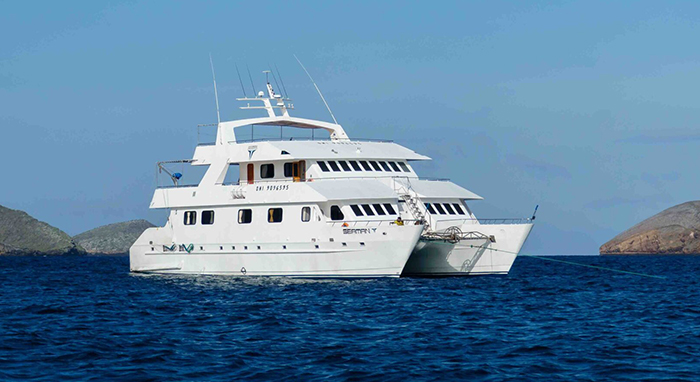
The Galápagos Islands are not a one-size-fits-all destination. The most important choice you’ll need to make is between a live-aboard cruise or a land-based tour. Both options have their pros and cons, with different trade-offs. Ultimately, the best decision depends on what you want to see, how you prefer to travel and your travel budget.
A Galápagos cruise is a live-aboard yacht experience where passengers eat, sleep, and tour aboard a boat. Upon arrival, travelers are greeted by an English-speaking naturalist guide, and from there, everything is all-inclusive. Cruises follow pre-set itineraries by the National Park, ensuring visits to specific sites each day, with opportunities for trekking and snorkeling. These cruises come in various lengths, including 15-day, 8-day, 5-day, and 4-day options. Each morning, you’ll wake up at a new island ready to explore. Cruises range from small
16-passenger yachts for a more intimate experience to larger ships offering more space and amenities.
Cruises offer access to all Galápagos visitor sites. By cruising at night and anchoring at sea, you can explore different islands each day. While some islands are close together, others require several hours of navigation, allowing cruises to cover more ground quickly. In summary, cruising itineraries provide the greatest variety of visitor sites in a short time. Certain islands can only be visited by cruise, such as Genovesa, renowned for its incredible diversity of bird species. Fernandina and the western side of Isabela Island are also exclusive to cruise yachts. These areas are the only places to see the Flightless Cormorant and the best spots to find Galápagos penguins nesting.
These cruises are very popular, so booking in advance is highly recommended. Over 100 approved yachts operate in the Galápagos Islands and most vessels are motor yachts or catamarans with a capacity for 16 passengers. Additionally, there are some larger liners that can accommodate up to 100 guests. Yachts are categorized into three main classes based on their facilities: Superior, First Class, and Luxury, with pricing determined by the yacht’s amenities.
A Galápagos land tour, also known as island-hopping or land-based touring, offers a flexible alternative to cruises. Travelers stay in hotels on inhabited islands like San Cristóbal, Santa Cruz, and Isabela, with easy access to ferries or flights between them. Daily guided tours take you to top National Park sites and nearby attractions, while free time allows for solo exploration. You’ll be close to beautiful beaches, restaurants, and boutiques. Best of all, land tour itineraries can be flexible—either choose a popular itinerary or customize your own adventure.
Land tours offer fewer itinerary options since they are based on the 3 inhabited islands—San Cristóbal, Santa Cruz, and Isabela. This limits visits to sites on or near these islands. However, land tours still provide access to many unforgettable Galápagos visitor sites. The only drawback is that some islands are too far to reach for day tours from land.
Although the Galápagos Islands are far from the mainland, the tourism infrastructure is well-equipped to provide visitors with comfort. No matter which island you choose to stay on, you’ll find a variety of hotels offering different levels of service and amenities, catering to various preferences and budgets.
How to move from one island to the other
Passenger transport boats
Small boats (up to 20 passengers) leave every day from the main dock of each port town. The trip lasts approximately 2 to 3 hours, depending on sea conditions. In the first half of the year, from January to June, sea conditions are more stable than in the second half of the year, from July to December, when the swell is stronger.
The sailing schedules between islands are as follows:
Schedules Departures
Santa Cruz – San Cristobal 7am / 3pm
Santa Cruz – Isabela 7am / 3pm
Santa Cruz – Floreana 8am
San Cristobal – Santa Cruz 7am / 3pm
Isabela – Santa Cruz 6am / 3pm
Floreana – Santa Cruz 3pm
An important point to note is that there are no direct boat transfers between Isabela Island and San Cristóbal Island. The only way to travel between them is by making a stopover on Santa Cruz Island. For travel between San Cristóbal and Santa Cruz, it’s often recommended to take a light airplane for a quicker and more comfortable journey. For more information, please visit https://www.ferrygalapagos.com
Recommendations
– The luggage check is carried out 30 minutes before the departure of the ferry.
– Each passenger can carry up to 23kg / 50,7 pounds of luggage. Excess luggage will be charged a USD10 fee.
– Protect your travel bags well as seawater can sometimes enter the boat.
– Have personal documents in a safe and dry place, best carry it on your body
– Eat breakfast or lunch in advance.
– Take a motion sickness pill one hour before leaving since the weather at sea is not predictable.
– Sit as close as possible to the outboard motors because they spend more time in the water and you will not feel the pounding caused by the waves in the front of the boat. – There are additional costs such as the USD 1 for water taxi and USD 10 for the Isabela port fees. Have cash on hand.
Inter-island flights
Another way to move between the Galapagos Islands is by light aircraft flights so you can
enjoy more comfort and make the most of your time in the islands.
Baltra – San Cristobal 10:30am / 1 pm 45 min
Baltra – Isabela 1 pm 30 min
San Cristobal – Baltra 8am / 12:30pm 45 min
San Cristobal – Isabela 8:30am / 2 pm 45 min
Isabela – Baltra 9 am 30 min
Isabela – San Cristobal 2 pm 45 min
Recommendations
– Each aircraft has a maximum capacity of 9 passengers.
– Bag Allowance (including carry on) per person is 6,8kg / 15 pounds
– Extra baggage allowance may be purchased online or at counter desk to increase the included baggage allowance per person.
– Excess luggage will be charged USD 2 per ½ kg / pound.
– Protect your travel bags well as seawater can sometimes enter the boat.
– Have personal documents in a safe and dry place, best carry it on your body
What to do and see in the Galapagos
The Galápagos Islands offer a wealth of unique activities and sights for nature lovers, adventure seekers, and wildlife enthusiasts. Here’s a guide to what to do and see in the Galápagos:
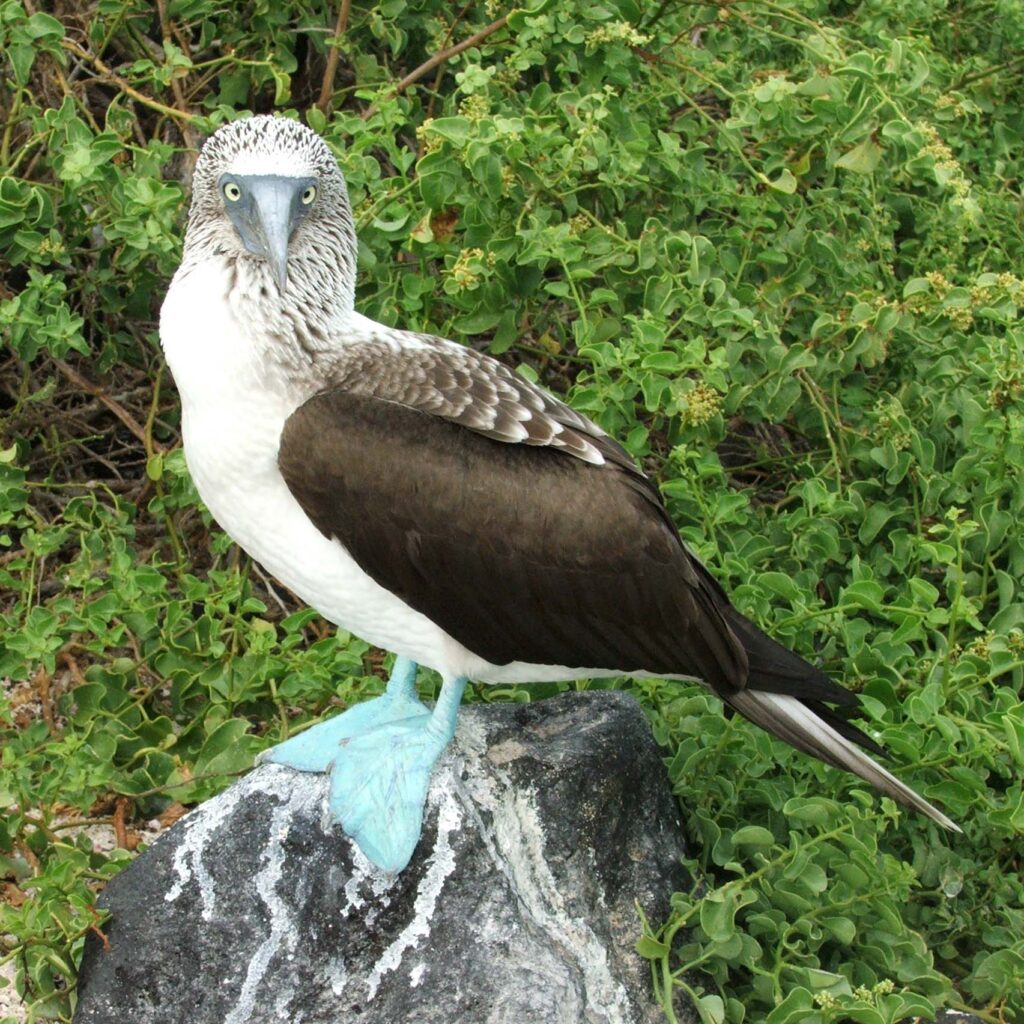
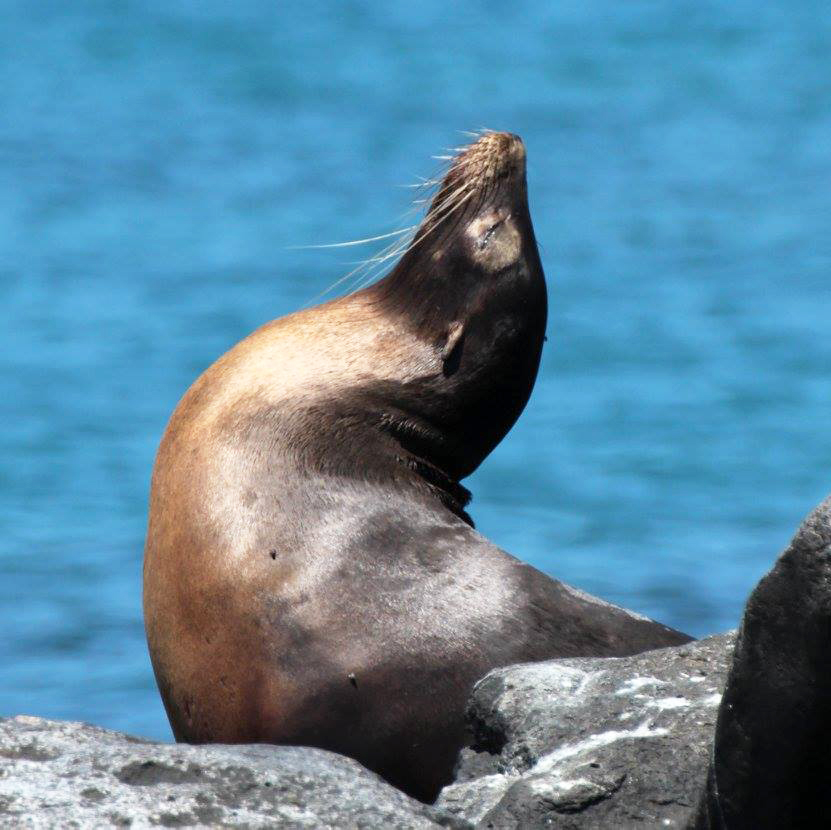
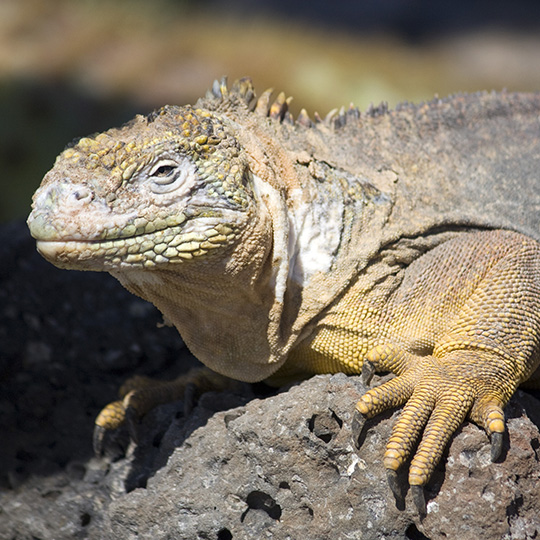
- Wildlife Watching
The Galápagos is famous for its diverse and unique wildlife, much of which can only be
found here. Key species include:
- Giant Tortoises on Santa Cruz and Isabela.
- Blue-footed Boobies, Nazca Boobies, and Red-footed Boobies.
- Marine Iguanas and Galápagos Land Iguanas.
- Galápagos Penguins on Isabela and Fernandina.
- Flightless Cormorants on the western islands.
- Snorkeling and Diving
The waters around the islands are teeming with marine life. Popular snorkeling and diving
spots include:
- Devil’s Crown near Floreana, a submerged volcanic crater.
- Kicker Rock near San Cristóbal, home to sharks, rays, and sea turtles.
- Gordon Rocks and Wolf & Darwin Islands for expert divers, where you can spot
hammerhead sharks, manta rays, and whale sharks.
- Trekking and Hiking
There are numerous trails across the islands, offering stunning views and encounters with
wildlife.
- Hike to Sierra Negra Volcano on Isabela for breathtaking views of one of the largest
volcanic craters in the world. - Explore Bartolomé Island and its iconic viewpoint for a panoramic view of Pinnacle Rock
and surrounding bays. - Trek through Lava Tunnels on Santa Cruz Island.
- Beaches
The Galápagos is home to some of the most pristine beaches in the world.
- Tortuga Bay and Garrapatero Beach on Santa Cruz, both famous for its powder-white
sand and wildlife. - Gardner Bay on Española, where sea lions, mockingbirds, and marine iguanas roam the
beach. - Concha de
- Charles Darwin Research Station
Located on Santa Cruz Island, this station is dedicated to conservation and research. It’s
also home to a Giant Tortoise breeding center where you can learn about ongoing efforts to
preserve the species.
- Kayaking and Paddleboarding
Explore the coastline by kayak or paddleboard, getting up close to marine life like sea lions,
turtles, and rays. Popular areas include Las Tintoreras near Isabela and Tijeretas Bay on
San Cristóbal.
The Galápagos offer a truly unique experience with unmatched wildlife and natural beauty, making it one of the world’s top destinations for eco-tourism and adventure. Please check our land based itineraries: https://ecuador.latitud0.com/tours-ecuador-and-galapagos/ https://ecuador.latitud0.com/tours-galapagos-adventure/
Packing Tips
- Comfortable trekking shoes, sandals
- Warm clothing for cooler evenings, at least a light fleece sweater
- Sun protection: headgear, sunscreen and sunglasses
- Cell phone and extra battery and travel adapter
- Video camera, camera and binoculars
- Rain jacket
- Comfortable clothing, Long and short sleeved shirts and t-shirts
- Swimming clothes
- Personal cosmetics, first-aid kit
- Backpack for day trips
- Water bottle for refilling
- Snorkeling equipment (optional)
- Seasickness medication
- Anti-mosquito spray
When to visit Galapagos
For warmer weather and calmer seas, visit between December and May. For cooler temperatures and rich marine life, June to November is ideal.
The Galápagos offers year-round experiences, with peak seasons (December-January and June-August) being busier and pricier, while shoulder seasons (April-May and November) offer good weather and fewer crowds. Low seasons (February-March and September- October) are quieter, ideal for those seeking marine life with fewer tourists.
The two main seasons: hot versus dry season
Hot Season (January to June)
A warmer and more humid climate.
Warmer water temperature to go snorkeling.
More wildlife activity on land.
Presence of dense and lush flora.
Intermittent showers on the islands.
Dry Season (June to December)
Humboldt Current brings in nutrient-rich waters. Cooler overall temperatures. More active marine life. Relatively pleasant climate for hiking due to greater cloud cover.
In addition to the two main seasons, the Galápagos Islands experience transition periods in December (from hot to dry) and June (from dry to hot). During these months, you’ll notice changes in sea currents, which lead to significant shifts in the archipelago’s vegetation, either flourishing or drying out.

For more Information about the best time to visit the Galapagos Islands, please check out our extensive Blog : https://ecuador.latitud0.com/best-time-to-visit-the-galapagos-islands/
When is the best time to see wildlife in the Galapagos?
On land, the hot season is favored for vibrant encounters with the Galápagos flora and fauna due to the flourishing vegetation, which nourishes a variety of wildlife. This period witnesses the colorful mating displays of marine and land iguanas, and the hatching of Galápagos giant tortoise eggs in breeding centers on Santa Cruz and San Cristobal islands. Note that certain migratory birds, like the Waved Albatross primarily seen in the dry season on Española Island, may affect the timing and location of your visit.
In the water, snorkeling from July to December introduces you to a dynamic undersea world, despite cooler water temperatures. For scuba diving enthusiasts, the period between June and October is ideal, especially for spotting whale sharks and large schools of hammerhead sharks. However, the Galápagos offers unique diving experiences year-
round. If aiming to see major marine life, consider scheduling your trip between June and September and opt for a special diving cruise to the remote islands of Darwin and Wolf. For more Information about the best time to visit the Galapagos Islands, please check out our extensive Blog : https://ecuador.latitud0.com/best-time-to-visit-the-galapagos-islands/

